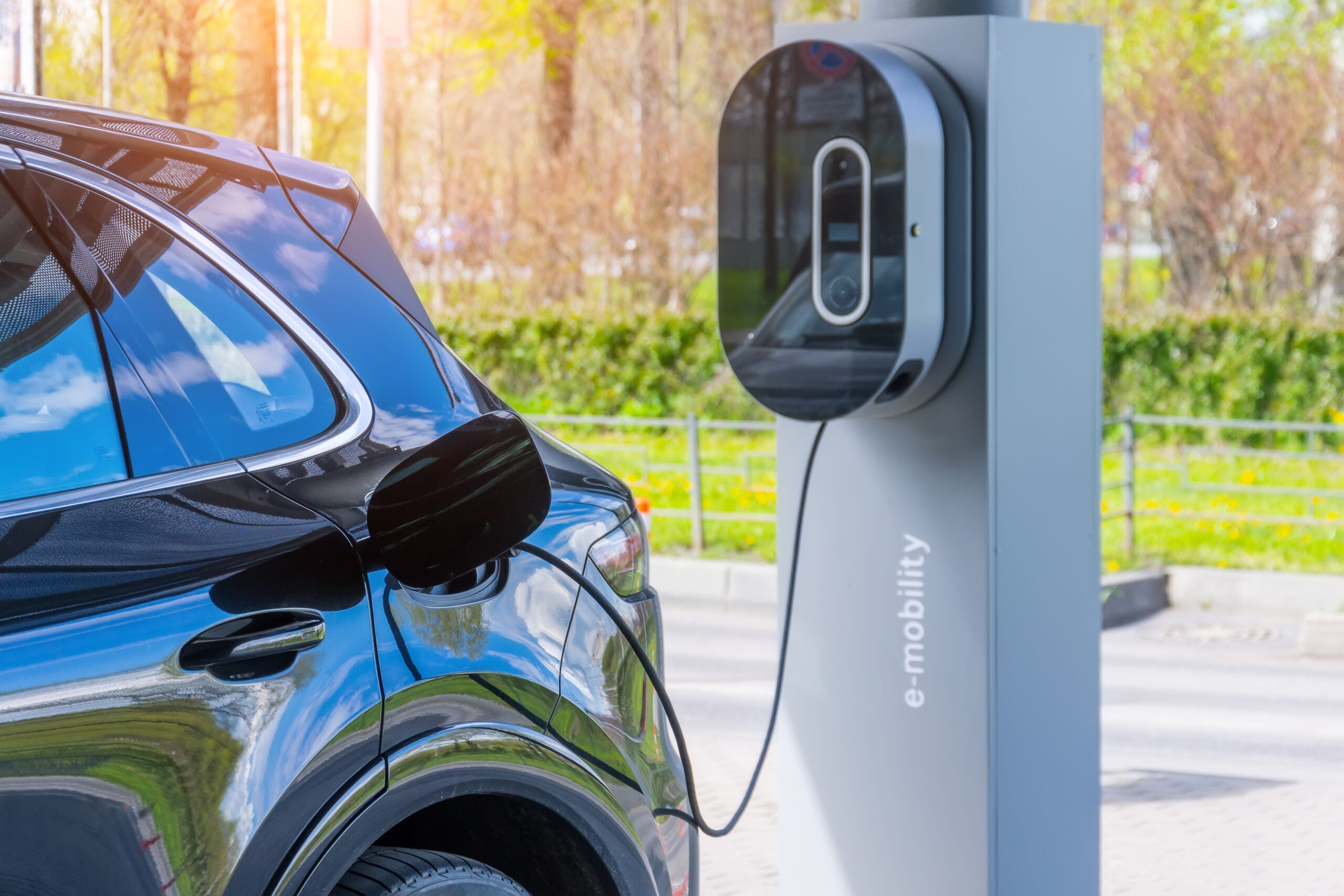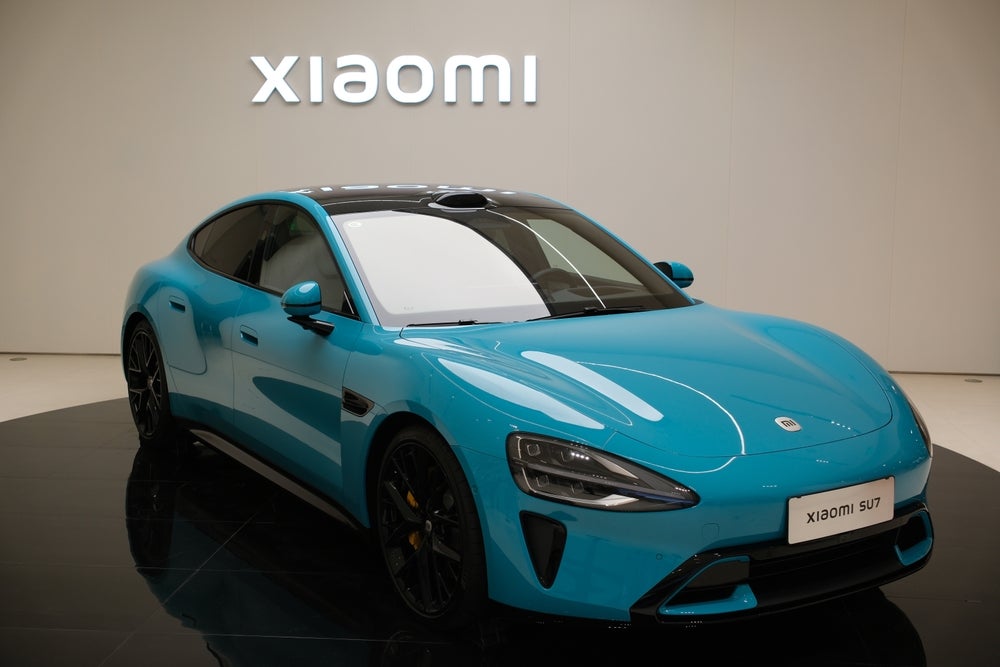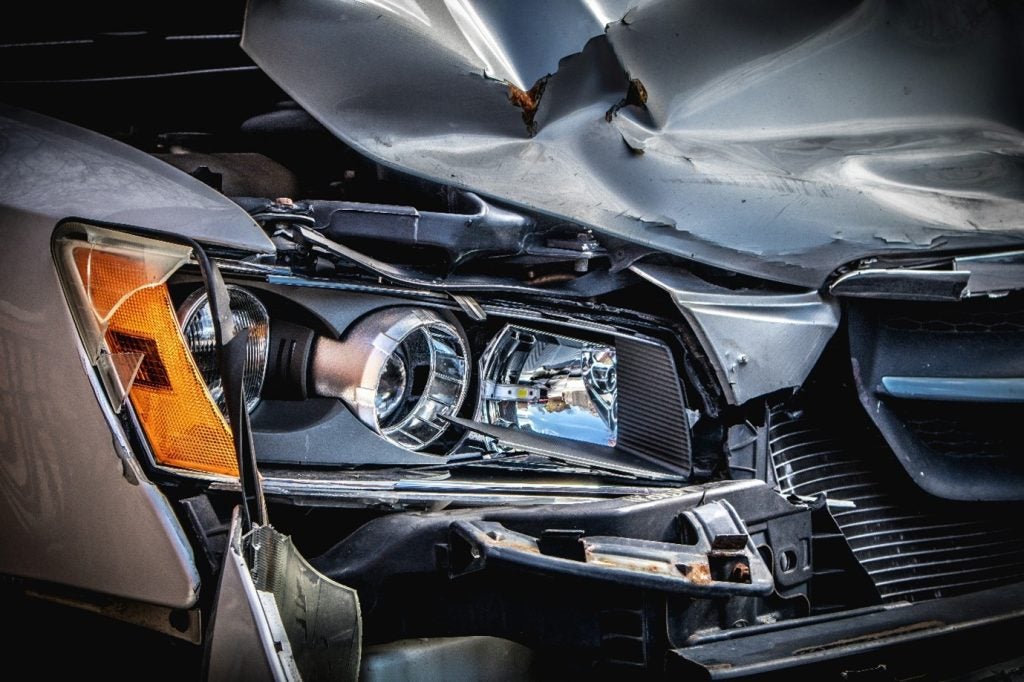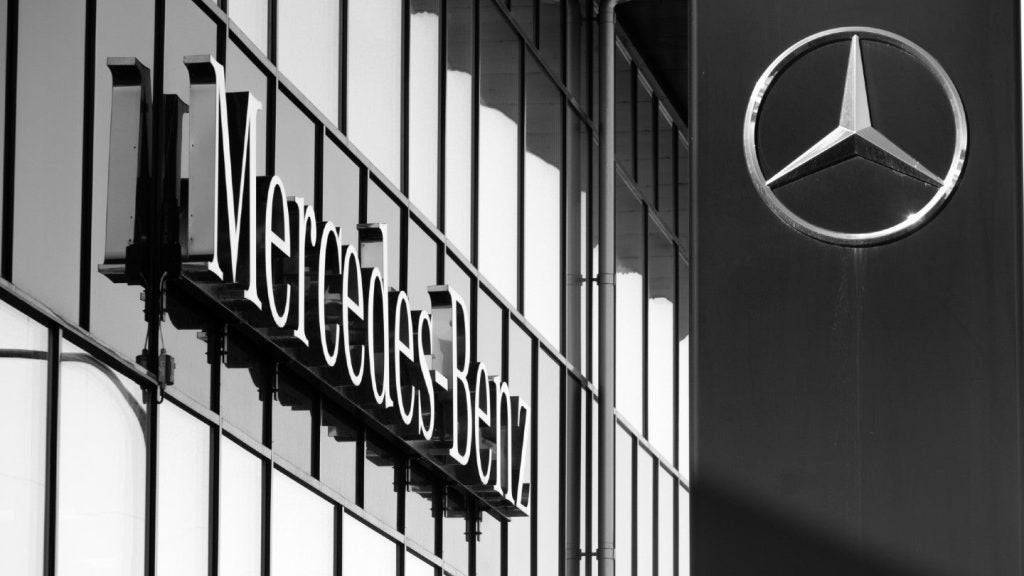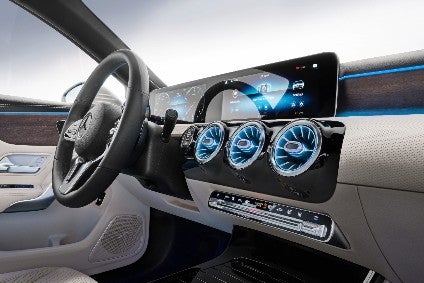
The latest car maker to have its current and future models scutinised is Daimler AG. Following a recently published look at Mercedes-Maybach, Denza and smart; now comes a round-up of what’s ahead for Mercedes passenger cars; to be followed by SUVs and the X-Class pick-up; with the series to be rounded out by a focus on EQ electrified models.
C segment/Compact
The smallest Mercedes-Benz is the fourth generation A-Class. This 4,419mm long five-door hatchback went into series production at Rastatt in April. It uses an evolution of the previous model’s MFA architecture. Production in Hungary was added in May, with Valmet Automotive adding build at its Uusikaupunki factory in Finland earlier in July.
How well do you really know your competitors?
Access the most comprehensive Company Profiles on the market, powered by GlobalData. Save hours of research. Gain competitive edge.

Thank you!
Your download email will arrive shortly
Not ready to buy yet? Download a free sample
We are confident about the unique quality of our Company Profiles. However, we want you to make the most beneficial decision for your business, so we offer a free sample that you can download by submitting the below form
By GlobalDataThis is first Mercedes to feature MBUX, shorthand for Mercedes-Benz User Experience. A special feature of this multimedia system is its ability to learn thanks to artificial intelligence. MBUX can be individualised and adapts to suit the user.
Whilst the A-Class hatchback won’t be sold in the US, it will be offered in Mexico and Canada. Mercedes-Benz USA will import the A-Class sedan from Mexico later in the year.
The next additions to the A-Class range will be two sedans: standard wheelbase and, for China, a Long body. The standard length model will be revealed to the media at an event in New York in a few days’ time. Its motor show premiere will then take place at the Paris show in October.
As for the longer car, (4,609mm), this has already been seen. Coming with a 60mm lengthier wheelbase (2,789mm), its world debut was at the Beijing motor show in April. Its model name is ‘A-Class L Saloon’ (i.e. not sedan).
Facelifts for all three A-Class bodies should take place in 2021 and the fifth generation model will be released in 2025. This will use a new architecture.
The successor to the B-Class is due to appear later in 2018. Like the A-Class, it will use MFA 2, a new version of the previous model’s architecture. The production life should be seven years, which means a facelift in 2022.
The CLA sedan had its global debut as a concept at the Paris motor show in September 2012. It is derived from the second generation B-Class. Daimler’s Hungarian plant was confirmed as the build location for this ‘four-door coupé’ in March 2012. The production model had its global debut at Mercedes-Benz Fashion Week (Berlin) in February 2013, though it was shown briefly to the media on the eve of the Detroit auto show one month earlier.
CLA-Class production commenced in late January 2013. Three months later, the first cars were in European dealerships. US sales commenced in September 2013 for that market’s 2014 model year. The first variant to be sold there was the CLA 250.
The CLA-Class Shooting Brake was announced in November 2014. The first cars arrived in dealerships from March 2015, production having commenced two months previously. The car had its world debut at January 2015’s Brussels motor show.
Indian assembly of the CLA-Class got underway in January 2015. This coincided with the Chakan assembly plant’s annual capacity being doubled to 20,000 vehicles.
A facelifted CLA sedan had its world premiere at the New York auto show in March 2016, with the refreshed CLA Shooting Brake launched to the public at the Laureus World Sports Awards in Berlin a few weeks later. The facelift was the main news for North America’s 2017 model year CLA range.
The second generation CLA-Class due out during the first quarter of 2020 will be based upon the MFA2 architecture. One major change is said to be the replacement of the sedan body style with a five-door fastback. Whether or not this means no successor for the Shooting Brake (wagon) is at present unclear. There should also be a long-wheelbase CLA-Class for China.
D segment/Mid-size
The current C-Class sedan had its world premiere at January 2014’s Detroit motor show and the first long-wheelbase C-Class sedan premiered three months later at AutoChina in Beijing. This 4,766mm long variant has a 2,920mm wheelbase, which is 80mm greater than the standard car’s. The C-Class L is built and sold only in the PRC. Production commenced there in July 2014.
As the previous W204 series C-Class sedan was shorter than the CLA-Class, the W205 is longer than the car it replaced. It also has more premium features, such as what was at launch a segment-first option of pneumatic suspension.
A facelifted C-Class sedan and wagon range was a world debut at the Geneva motor show in March. The facelifted C-Class L was then revealed at the Beijing motor show in April.
The revised styling is the main news for North America’s 2019 model year.
The next C-Class line-up is due out in 2021. There will again be multiple body styles, including, potentially, a five-door hatchback. The platform will be MSA.
E segment/Large
W213, the latest E-Class sedan, was revealed at January 2016’s North American International Auto Show. Compared to the previous generation, its wheelbase length was expanded by 65 millimetres (2,939/2,874) and its overall length by 43 millimetres (4,923/4,880). Production commenced at Sindelfingen in February 2016.
The car’s architecture is an evolution of MRA, as introduced by the S-Class and also used by the C-Class.
The E-Class L, which is the long-wheelbase sedan, had its world premiere at the Beijing show in April 2016, with production commencing two months later. The E-Class Estate was announced to the media in June 2016.
In February 2017, Daimler announced plans for a car factory in Russia. The E-Class as well as ‘SUVs’ were named as the vehicles to be made at the plant which will be located some 40km northwest of Moscow. Mercedes-Benz Manufacturing RUS (MBMR) is due to produce the first vehicles in 2019 at Esipovo Industrial Park. A further media release from Mercedes-Benz in June 2017 stated that the GLE, GLC and GLS will also be assembled at the ‘Moscovia’ plant.
In March 2017, Mercedes-Benz India launched a right-hand drive long-wheelbase sedan. This is the only market where the car is sold. It is locally assembled from kits shipped in from China.
Mercedes-Benz USA announced its 2019 model year range in May. The main news was the arrival of the E 400-replacing E 450 cars, each powered by an updated biturbo 3.0-litre petrol V6.
The next major news will be a facelift in 2020. The future E-Class will be rolled out from 2023. It will share the MSA platform with the next C-Class, CLS-Class and S-Class.
The latest CLS-Class sedan made its world premiere at the LA auto show in November 2017 and entered production in March. One of the biggest changes is to the car’s interior where, for the first time, this generation model is a five-seater. Also, the Shooting Brake was not replaced. There will be new engines added during the car’s seven-year production cycle, with a facelift scheduled to take place in late 2021.
The future CLS will be yet another model for MSA, an architecture which is for all next generation cars which are rear- and/or all-wheel drive.
F segment
The current S-Class was revealed to the media at a special event in Hamburg in May 2013. The car had multiple claimed world firsts, including no lightbulbs (LED instead, modules supplied by Automotive Lighting), heated armrests, and suspension that is primed for the road ahead. All build is in Germany but CKD assembly in India commenced in March 2014.
This big sedan brought with it a new platform, MRA. This, in modified form, underpins the current C-Class and E-Class.
A new range of lower emissions engines was announced by Daimler in October 2016. An updated S-Class was the first car to be fitted with many of them. The facelifted model had its public debut at the Shanghai motor show in April 2017. The latest engines are a range of inline six-cylinder petrol and diesel units as well as a biturbo petrol V8.
As part of the updated line-up, Mercedes-Benz gave the S-Class technology which takes it closer to autonomous driving. DISTRONIC Active Proximity Control and Active Steer Assist now provide even more support for the driver to keep a safe distance and steer. The speed is now adjusted automatically ahead of curves or junctions.
The revised S-Class has touch-sensitive controls in the steering wheel. They respond to swiping motions like the screen of a smartphone and enable the driver to control the entire infotainment system without having to take their hands off the steering wheel.
The infotainment system can also be operated via the touchpad with controller in the centre console and by LINGUATRONIC voice control. The operation of DISTRONIC and cruise control with control elements directly on the steering wheel is another new feature.
As a new model is now only 18 months away, no further changes are due fo the current car.
Daimler issued a media release in February which, heavy with buzzwords, but did not logically explain the so-called ‘Factory 56’. The next S-Class will be one of the vehicles to be made at this facility, which appears to be a new production hall within the Sindelfingen manufacturing complex.
The S-Class was specifically mentioned thus:
In 2020, the “Factory 56” will already start production of upper- and luxury-class cars and electric vehicles at the Mercedes-Benz Sindelfingen plant. Passenger cars, electric vehicles of the upper and luxury class and robo-taxis will be produced. These include the new generation of the S-Class as well as the first electric vehicle of the product and technology brand EQ “made in Sindelfingen”.
The next S-Class will be another model for MSA. This is to be a lighter evolution of the current car’s MRA platform.
Coupés and Cabriolets
The C-Class Coupé had its world premiere at the Frankfurt IAA in September 2015 and six months later, the C-Class Cabriolet had its public debut premiere at the Geneva motor show, production commencing at Bremen three months later. Facelifted versions of both were revealed three months ago at New York auto show. Deliveries commenced in Germany earlier this month, with the updated models new in North America for the 2019 model year.
The next C-Class Coupé and next C-Class Cabriolet will be MSA-based. They are due for release in 2021.
The SLC-Class was originally known as the SLK-Class. It had its global debut at the Geneva motor show in March 2011.
Daimler used the timing of a mid-life facelift to change the car’s name, the thinking being to link the model to the C-Class. The SLC had its world premiere at January 2016’s Detroit motor show with vehicles available to order from later the same month. In North America, the SLC-Class was new for the region’s 2017 model year.
R173, a next generation SLC-Class, was at one time planned to be built alongside the SL-Class’ successor at Sindelfingen after relocating from the Bremen plant. This future SLC would have been based on Daimler’s MSA components set but due to the car’s segment having undergone major contraction, R173 was axed. R172 will likely go out of production in 2019.
The current E-Class Coupé (codename: C238) had its world premiere at the Detroit motor show in January 2017, production commencing later that month at Bremen.
The E-Class Cabriolet (A238) was revealed two months after the coupe, its debut taking place at the Geneva show. Both cars are due to be facelifted in 2020 and replaced in 2023. The next generation models will use MSA.
The current SL-Class, a hard-topped roadster, had its global debut at the Detroit auto show in January 2012. This was the first series production Mercedes-Benz to have an all-aluminium bodyshell. Magnesium, which is even lighter, is used for the cover behind the fuel tank, while high-strength steel tubing is integrated in the A-pillars for safety reasons. The car is said to have a unique platform but other Mercedes-Benz models have evolutions of it.
As for the convertible top, this can be had with either standard glass or the so-called Magic Sky Control. Mercedes says the system lowers itself in 20 seconds and is more cleanly integrated than the roof in the R230 (previous shape) SL.
In North America, this generation model was new for the 2013 model year. It was carried over for the 2014 model year. The SL 400 was new for the 2015 model year. The car was mainly carried over for the 2016 model year but there was a facelift for the 2017 model year. The restyled SL had its world premiere at November 2015’s LA auto show.
Timed to coincide with the launch of the facelifted range, Daimler gave all variants a standard nine-speed gearbox in 2016.
The next SL-Class should enter production at Sindelfingen during 2019. R232 will be based on the Modular Sports Architecture (MSA). This is one of four architectures that Daimler is moving all of its passenger vehicles to – the others are MFA, MHA (for SUVs with H denoting High) and MRA.
Some sources believe that the eighth generation SL will be a 2+2 and therefore a challenger to the Porsche 911. And also that for the first time since the fourth generation model, that there will be a separate coupe.
There are also rumours claiming that these cars are being engineered by AMG, not Mercedes-Benz and that the GT is to be the basis of the next generation SL. R232 is said to be breaking with tradition by being made into a supercar rather than a grand tourer.
The S-Class Coupé model name returned in 2014, the latest car replacing the CL-Class. The S-Class Cabriolet then had its world premiere at the Frankfurt IAA in September 2015, going on sale across Europe six months later.
The US is the largest market for both cars. The coupe was launched there in the third quarter of 2014, with the convertible following in May 2016. Until the arrival of a facelifted range with new engines for the 2018 model year, the rest of the world’s S 500 Coupe was sold in North America as the S 550 Coupe. It had standard 4MATIC all-wheel drive.
The restyled range had its world debut at the Frankfurt IAA in September 2017. As well as the styling changes, the former 4.7-litre V8 was replaced by a more powerful 4.0-litre V8. The line-up became as follows: 3.0-litre V6 S 450 4MATIC and bi-turbo 4.0-litre V8 S 560/S 560 4MATIC. The updated range was in German dealerships from January.
Daimler will release the next S-Class Coupé in 2023. The S-Class Cabriolet successor will be added in 2024. Both cars will be built on MSA, the same architecture as the future S-Class.
Future model plan reports for other manufacturers can be viewed in the OEM product strategy summaries section of just-auto.com.
Future product program intelligence
More detail on the past, current and forthcoming models for every division of Daimler AG can be found in PLDB, the future vehicles database which is part of QUBE. Project codes for the many cars mentioned in the above feature are listed in PLDB.

